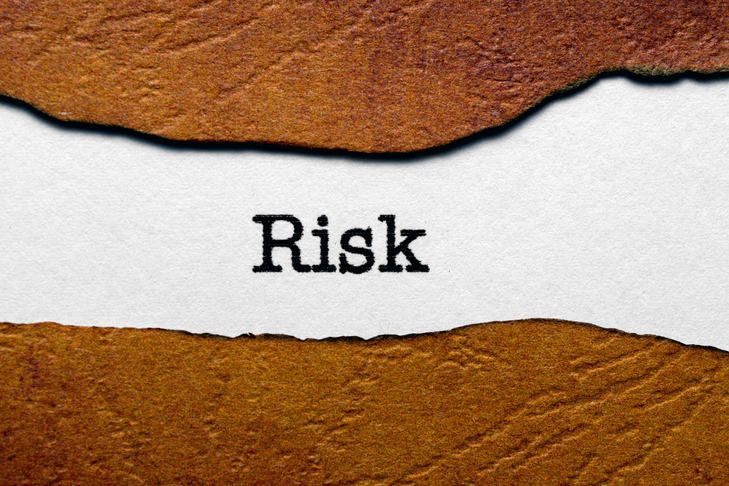Food Supply Chains: Risk Based Procedures

Share this step
In order to ensure the safety of our food system, a risk-based approach is required as part of European Legislation. This risk-based approach is advantageous as it concentrates resources on the critical points in the food chain which pose the highest risk.
Hazard Analysis Critical Control Point is the procedure advocated in legislation to ensure all stages of production and distribution are systematically assessed to identify and control the critical points for safe food and feed.
Hazard Analysis Critical Control Point
HACCP is a science based system that enables the introduction and maintenance of a cost effective ongoing food safety programme. It allows a food business to establish a high degree of food safety that could not be achieved by following good hygiene practices alone.
HACCP systems have 7 key principles which have been broken down into 12 steps in The Codex Guidelines:
1. Assemble and train the HACCP TeamThe HACCP team must be proportionate to the size, risk and complexity of the business operation. The team must have the technical expertise and awareness of the potential hazards and control associated with the animal feed production.2. Describe the products and processesA detailed description of the process and final products will be provided.3. Identify intended usersThe intended users of the final product are stated.4. Construct a flow diagramA systematic representation of the sequence of steps involved in the production of the final product is constructed. Typically, this starts with the purchase of raw materials to the customer.5. Validate the flow diagramValidating that the constructed flow diagram accurately reflects what happens during production6. Conduct a hazard analysis (Principle 1)Hazard analysis involves:
- Identifying the hazards that may affect the process
- Identifying the steps were hazards are likely to occur
- Deciding which hazards are significant
- Determining the measures necessary to control the hazards
7. Determine the critical control points (CCPs) (Principle 2)These are the steps where control measures are necessary to prevent biological, chemical or physical hazards presenting a safety risk to animals or consumers.8. Establish critical limits for each CCP (Principle 3)Critical limits are the values which are set for control measures to ensure the feed is safe. Critical limits should be unambiguous and measurable. If a critical limit is breached the feed should be rejected. To avoid waste and allow corrective action to be taken before the critical limit is breached, it is advisable to set a target level. If the target level is breached, corrective action can be taken to get it back within the target. Critical limits include time, temperature, size, weight and appearance/colour. Objective and measurable parameters are preferable.9. Monitoring of control measures at each CCP (Principle 4)Monitoring is necessary to confirm that the process is under control and critical limits are not exceeded. Monitoring systems should state:
- What the critical limits and target levels are
- How the monitoring should be undertaken
- Where the monitoring should be taken
- When the monitoring should be taken
- When the monitoring should be undertaken
- Who is responsible for monitoring
10. Establish corrective actions (Principle 5)Corrective action is the action taken when a critical limit is exceeded. There are two parts to corrective action. Firstly, what to do with the affected product, and secondly, bringing the process back under control. Procedures for corrective action should outline:
- the action to be taken and by who (e.g. how to deal with the product, product, stop production, issue a recall)
- who should be notified
- who can authorise the restart of production or sales
11. Establish verification procedures (Principle 6)Verification involves the use of methods, procedures and tests, in addition to those used in monitoring to demonstrate that the decisions made in the development of the HACCP study are valid and effective. A number of methods can be used to verify the HACCP system:
- Examining monitoring records, deviations and complaints
- Auditing the HACCP system to ensure all hazards and CCPs have been identified and controls and monitoring remain effective is the most common verification technique
The HACCP plan should be reviewed periodically, when a change has occurred (e.g. new raw material, equipment, recipe or packaging) and when a complaint or illness has occurred.12. Establish documentation and record-keeping (Principle 7)Documentation helps to demonstrate compliance to the HACCP plan and to support a due-diligence defense if this is required in court.Documentation to support the HACCP system may include:
- Details of the HACCP team
- The scope and terms of reference
- The product and process description
- The intended customers
- A floor plan
- The flow diagram
- The prerequisite programme
- Hazard analysis and CCP determination
- Critical limits, targets, deviations and corrective actions
- Signed and dated monitoring records
- Validation, verification and review procedures
- Audit reports
Vulnerability and Threat Analysis Critical Control Point – VACCP and TACCP
This risk-based approach (HACCP) has been criticised for its reactive nature, focusing on historic or existing knowledge. The literature expresses the need to predict medium-long term issues to allow effective preventative action. In particular, the need for proactive approaches were highlighted following the horse meat scandal.
In response, research publications; government and regulatory guidance; and international standards provide guidance on steps to eliminate opportunities both by opportunistic and malicious individuals who want to exploit and infiltrate the food system – known as Vulnerability Analysis Critical Control Point (VACCP) and Threat Analysis Critical Control Point (TACCP).
These methodologies are advantageous as they are based on fundamental criminology and crime scene theories whereby the focus is on reducing the opportunity as opposed to the numerous types of fraud or threats, offending personnel and organisations. Moreover, they are based on the already internationally accepted HACCP concept, but introduce the terms vulnerability and threat to food control.
Food Management System
Ultimately, a food integrity management system comprising of HACCP, VACCP and TACCP is crucial to help the industry assign countermeasures which protect food safety, quality, authentic and security issues and help achieve consumer trust in the food industry.

Figure 1: The Food Integrity Management System
Food quality and safety factors are unintentional biological, chemical and physical hazards to food quality and safety addressed by HACCP. Food defence is an intentional threat to the quality safety of food for malicious purposes addressed by TACCP. Food fraud is an intentional act for economic gain, which could lead to a food quality or safety incident, addressed by VACCP. Whilst each of these factors are stand-alone entities by definition and motivation, they are integrated as they each compromise food integrity and create uncertainties to the other three factors. Moreover, their consequences and methods for detection and mitigation include similar aspects. This is illustrated in the numerous examples of food fraud incidents, which create food quality and food safety repercussions.
What we would like you to do
The Food and Agriculture Organisation (FAO) of the United Nations put together examples of the application of HACCP for mycotoxin control.
Please review these examples here to see how the 12 steps of HACCP are implemented within a feed business.
Please share your thoughts on the food management system in the comments section below:
- Have you ever heard of HACCP, VACCP or TACCP before?
- Do you think focusing on critical control points is a good approach?
- Do you think this is an easy or difficult approach for the sector to implement?
Share this
Understanding Food Supply Chains in a Time of Crisis

Understanding Food Supply Chains in a Time of Crisis


Reach your personal and professional goals
Unlock access to hundreds of expert online courses and degrees from top universities and educators to gain accredited qualifications and professional CV-building certificates.
Join over 18 million learners to launch, switch or build upon your career, all at your own pace, across a wide range of topic areas.
Register to receive updates
-
Create an account to receive our newsletter, course recommendations and promotions.
Register for free







